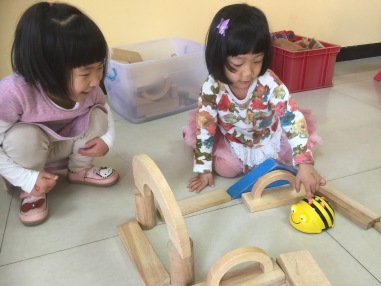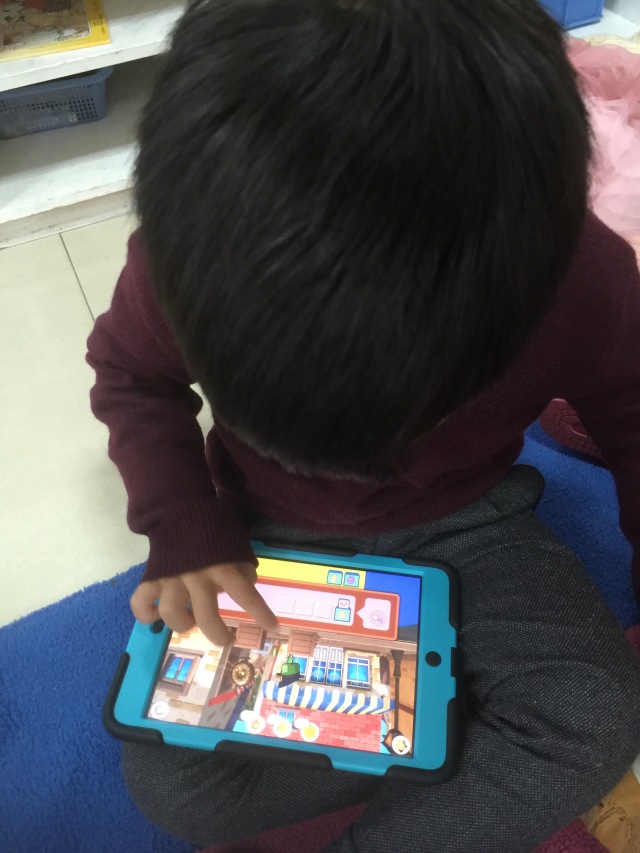A Journey into Design Thinking to Tackle Classroom Challenges
Design thinking isn’t a subject, topic or class. It’s more of a way of solving problems that encourage positive risk-taking and creativity.
-From LAUNCH by John Spencer and A.J. Juliani-
I am not proud to say this but I am really struggling with our school’s initiative to tear down classroom walls and combine classes to increase collaboration. I’m usually keen to try out new ideas but it’s made me question so many things about what is trending in education and has really made me “sharpen my stone” when it comes to classroom management. But here’s the thing, I don’t want to ‘manage’ the students, I want to empower them. So I wonder what I am missing –how can I use this structure and type of learning to fulfill the needs of our 21st-century learners? How will this better prepare them for their future? George Curous says “Change is an opportunity to do something amazing“. So I’ve taken on my innovator’s mindset and have begun to apply design-thinking to build a better functioning learning environment.
In Design Thinking, initially, you seek to understand your “audience” or the “user” and define the problems that they may have. Currently, we have two perspectives to consider: our students and our team of teachers. Collectively we are a community of learners, but it’s important to put the needs of the children first–they are the reason why we are here anyway, right?! But as teachers, we are the facilitators of this change, so I think our focus will ultimately be on the big WE, and cannot carve ourselves out of the equation when developing a flourishing community of learning.

Because this is the research and discovery phase, I am really digging into books and articles to find ways to make this work–not that we survive but to thrive in such an environment, and turn this challenge into an opportunity.
So I’ve begun to approach our situation through the lens of curiosity and ask questions about the challenges that are most immediate and pressing. As teachers, we have three main areas of concern: time for learning, the organization of the learning space, and conducting effective and engaging classroom discussion (in the large group and in small groups with our noisy space). Here is a list of just some of the questions I have begun to formulate about our collaborating Grade 1 classes:
- How can we structure our timetable to ensure that we have enough stand-alone literacy, maths and then transdisciplinary unit time?
- Of those transdisciplinary subject areas, how best do we need to develop the knowledge and skills in that areas?-in the “large group” (both classes combined) or in “split groups” (separated grade 1 classes) or through a carousel of activities.
- How do individual voices get heard in all the “noise”? What tools and strategies do we need to employ to make sure that there is a diversity of ideas being shared, especially our English Language Learners?
- How can we use our space to design areas, not just for literacy and maths, but for genuine collaboration, creativity, and quiet?
- What gets the kids not just “doing stuff” but actually thinking and reflecting?
- And how do we develop strong relationships with our students, knowing about who they are and how they learn best? What feedback systems can we create to help them go from learning passively to actively engaging and ultimately being empowered?
Although I know that we have already begun a rough “prototype” with how we tackle these challenge areas, I recognize that we need more time to understand our learners, our constraints and what the research says about developing more collaborative learning environments, which some have dubbed as Modern Learning Environments (MLE).

So as I layer the designer mindset to frame our challenges, I recognize that we will need to actually get more data. If I am to rewind and start again, then our discovery phase requires a deeper analysis into the complexities of our learners and the needs of our community. Other than our co-planning meetings and daily reflections, I have 2 other ideas for mining some data:
- Student survey: we need to find other ways to include their student ideas so they are co-designers of our learning community. In the book, The Space: A Guide for Educators , the authors encourage including student voice to create a purpose for the learning spaces and cultivate behaviors that support their emotional and mental growth. I am thinking of using the formative assessment app Plickers for a general climate survey and then work on interviewing students either individually or in small groups to get their feedback and input on how we can improve the learning.
- Fly on the Wall-I would like to ask some staff members, including administrators, to just pop in and make objective observations. I am thinking about making a questionnaire as a framework for their drop-ins, but I’m also really curious about them just capturing some conversations that they hear–what is the “talk” in the classroom?
As I begin to dive into our data, I will be sure to share some of the results. Truthfully, I’ve always thought about design thinking as something that you introduce when doing project-based learning and never thought to use it in this context, so I’m exploring new territory. I am really keen to hear other people’s stories and ideas about how I can go deeper. What am I missing? What suggestions do you have?
Developing learners as leaders is my joy! I am committed and passionate International Baccaluearate (IB) educator who loves cracking jokes, jumping on trampolines and reading books. When I’m not playing Minecraft with my daughter, I work on empowering others in order to create a future that works for everyone.



 After bobbing back and forth between the Early Years and 4th grade for the last couple years, I will be happy to settle in 1st grade for a while, where you get the best of the Early Years mindset (unfettered creativity and imagination) and yet starting to gain confidence and competence in Literacy and Numeracy skills, making it possible to go deep with developing their knowledge and thinking skills. Plus their minds aren’t as sullied with “can’ts” as the older grades are, making them so wonderfully teachable. Oh, the joy of learning!-for both me and them.
After bobbing back and forth between the Early Years and 4th grade for the last couple years, I will be happy to settle in 1st grade for a while, where you get the best of the Early Years mindset (unfettered creativity and imagination) and yet starting to gain confidence and competence in Literacy and Numeracy skills, making it possible to go deep with developing their knowledge and thinking skills. Plus their minds aren’t as sullied with “can’ts” as the older grades are, making them so wonderfully teachable. Oh, the joy of learning!-for both me and them.

































